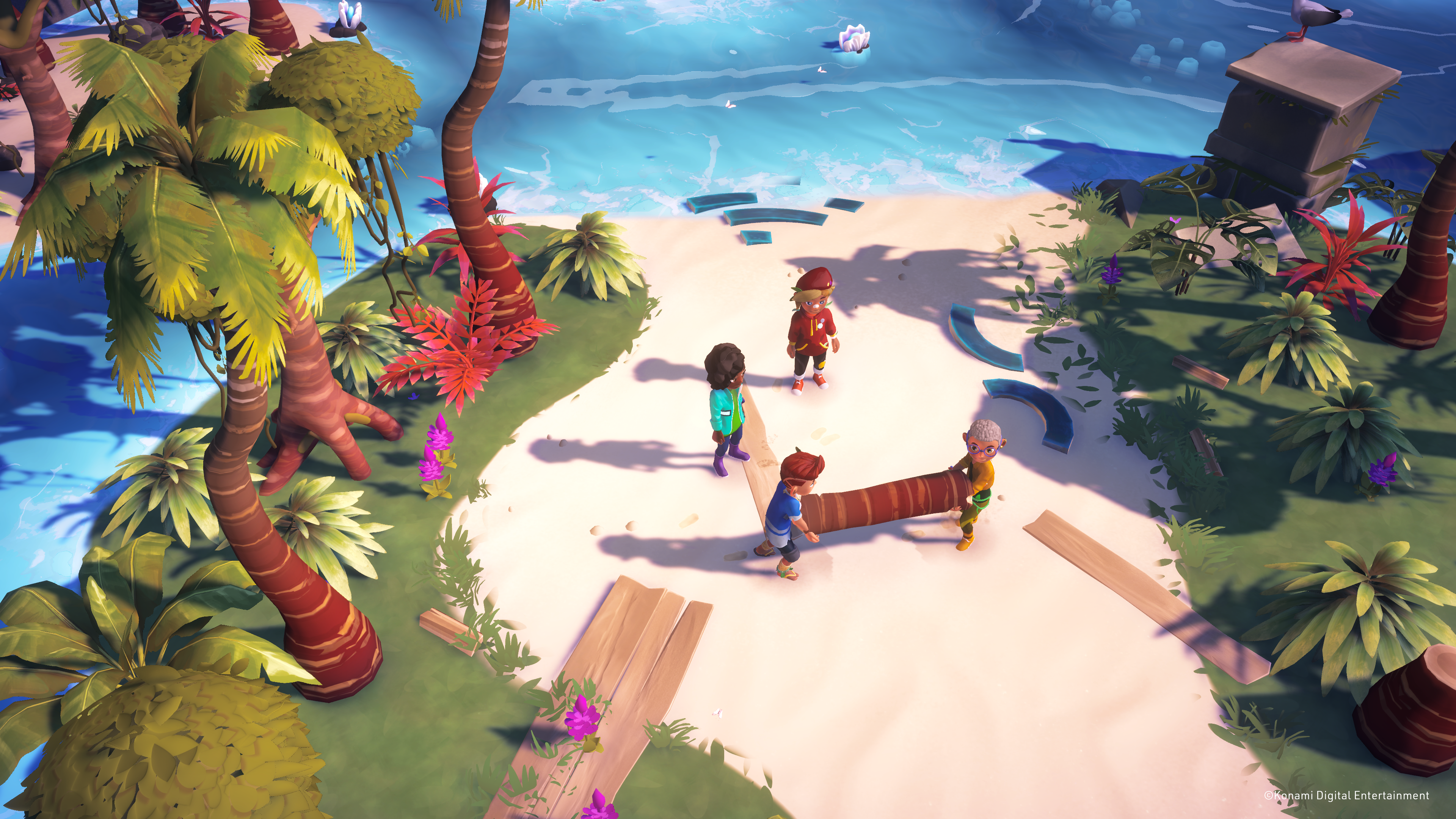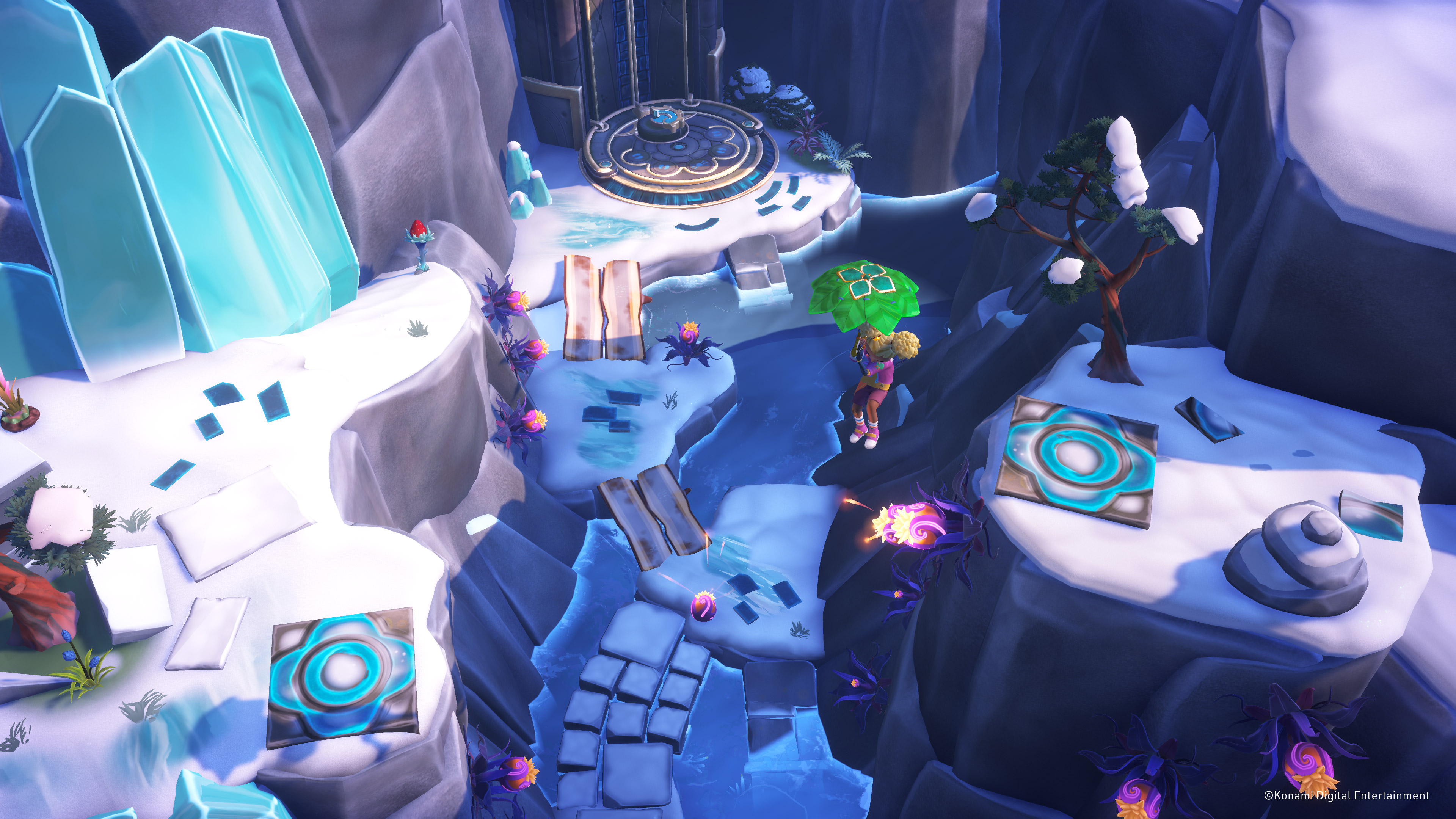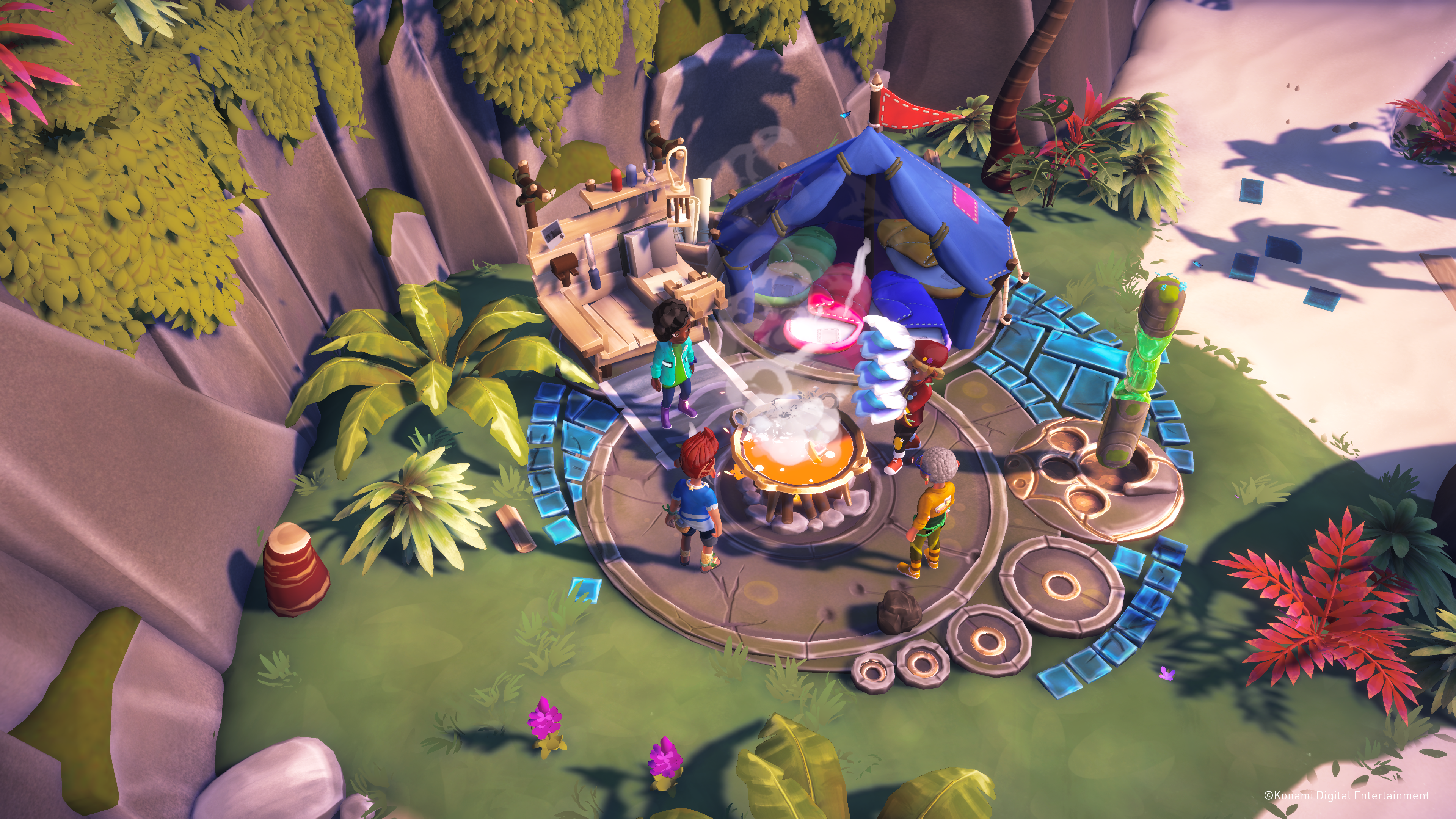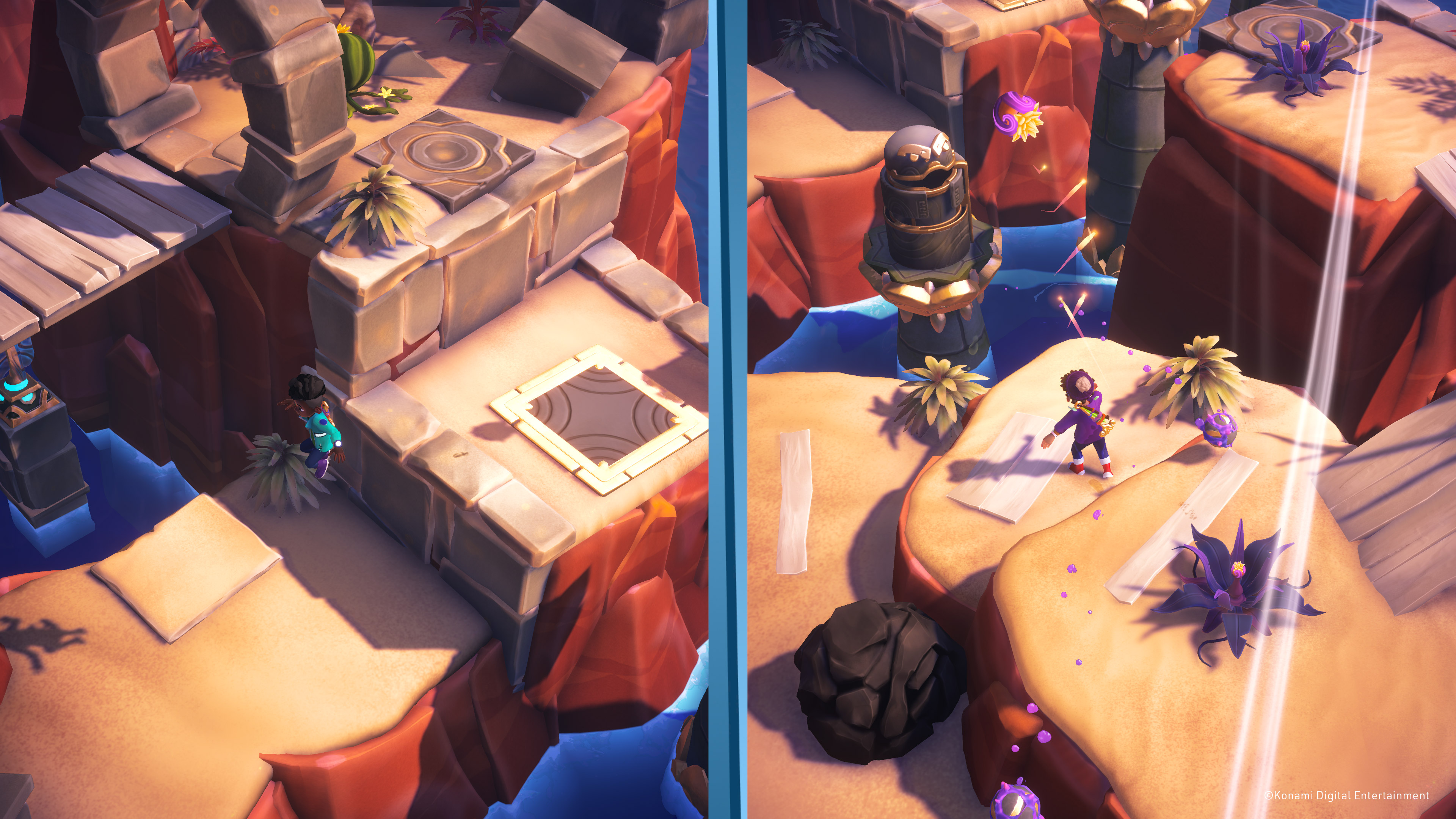Survival Kids developers on the 'pressure' of making a Nintendo Switch 2 exclusive launch title
"It's June 5, it's got to be ready by then"

The Nintendo Switch 2 is almost here, and the excitement is ramping up. With the likes of Mario Kart World and Bravely Default: Flying Fairy HD Remaster available on day one, there’s going to be no shortage of great games to play when you get the shiny new system out of the box. Still, there’s one interesting Nintendo Switch 2 exclusive that might have snuck under your radar up to this point.
I’m referring to Survival Kids, a colorful co-op adventure revealed in the Nintendo Switch 2 Direct. If the name sounds somewhat familiar, it’s because it’s a revival of a largely forgotten series that started life all the way back in 1999 on the Game Boy Color. The first entry spawned a Japan-exclusive sequel but eventually transformed into the much more widely known Lost in Blue series of games on the Nintendo DS and Wii.
Published by franchise owner Konami, this new revival is being developed by Unity, the creators of the hugely popular game engine, in what might seem like quite an unlikely collaboration. Last week I had the chance to try out the game on Nintendo Switch 2 hardware at Konami Europe HQ and chat to some of the guiding voices behind it.
Lost at sea

First and foremost, I wanted to find out why now was the time to bring back such a dormant franchise. “That goes back to how Konami and Unity met,” begins Konami’s Richard Jones, creative director of Survival Kids. “I was looking for an external studio to reinvent an old Konami IP. Unity was looking to do their first end to end development project.”
Members of the two teams first met at Gamescom, with conversations on which old games might be best to bring back. “Obviously Konami has a massive warehouse full of IP that goes back a long, long way,” he continues. “But there was something about Survival Kids. I remember playing it when it first came out, and really enjoyed it.”
Set in a semi-open desert island world, the original Survival Kids challenges the player to manage their hunger, thirst, and fatigue by crafting items and scavenging food from their surroundings. This, Jones argues, is a concept ripe for expansion and reinvention.
“I also really enjoyed the theme of it, the idea of the desert island, the idea of kids shipwrecked without their parents, and those ideas of childhood adventures and that sort of thing,” he says. “It just seemed, thematically, like a really interesting canvas to work with, you've got so much potential. There are so many examples in literature, as well in popular culture, of shipwrecks and desert islands.”
Sign up for breaking news, reviews, opinion, top tech deals, and more.
One of the biggest departures from the original Survival Kids is the revival’s much more casual, predominantly co-op focus. According to Jones, this was a priority from day one: “We started with that template of wanting this to be a multiplayer game, a co-op game, that will be something that people of any skill level and any generation could play together.
“We had this image of parents playing with kids, brothers and sisters playing together, friends and family. So that was the core of what we wanted to do, and the game got built around that because we realized that if you're trying to make a social game that’s about bringing people together and everyone having a good time, it needs to be a certain type of game. It needs to be a game that's fun to play and easy for anyone to get into.”
Pick up and play

The decision to pursue co-op informed almost every aspect of the game’s design. The upcoming Survival Kids has colorful, cute visuals, with a shiny, almost plastic look that feels reminiscent of the 3D animation in modern kid’s TV shows.
“I think it also changed the tone of the game. The Game Boy Color game is quite serious in tone,” explains Jones. “It's a child on an island that can die. It has a dark tone to it, whereas we wanted this to be more friendly and more evocative of those childhood adventures, you know, the Lost Boys from Peter Pan.” At its core, it’s a game about “kids having an adventure and having a good old time, rather than the risk of dying from thirst.”
"We wanted this to be more friendly"
Richard Jones, creative director
As I played through a selection of stages (there’s no semi-open world here), it was easy to notice the many decisions taken to help reduce friction with others and increase the game’s approachability for even the youngest of players. Controls are simple, so much so that I imagine the game would be quite easy to pick up and play without the need for any real tutorial onboarding, and the process of crafting structures like ladders and bridges to progress is always a collaborative effort.
Big crafting boxes litter the environment, you simply throw the required materials like wood and vines in and you’re good to go. When you acquire key items, like a glider that allows you to float over certain gaps, they spawn for every player and can be easily picked up at any time in your camp - a little hub area that you move between points as you progress through the stage. While co-op is a huge part of the experience, the developers assured me that the entire game is still a lot of fun to play solo.
“We made sure every puzzle can be completed with just one person,” explains Andy Dennison, Survival Kids senior producer at Unity. “We actually do some clever things dynamically based upon how many people are in the session. So the amount of wood you need for a crafting recipe, or the amount of time a pillar takes to rise is dependent on how many people are in the game. As people drop in and drop out, that adjusts dynamically.
“Every single part of level design, every single bit of balancing, it's always been to make sure it's a great solo experience, but also works really well in co-op,” he adds. “I think co-op does offer a few advantages, and that's why we've invested in modes to try and get people playing together easily.”
Harder than it looks

In addition to offering split-screen local co-op, Survival Kids takes full advantage of the Nintendo Switch 2 exclusive GameShare feature. This allows you to share your game with nearby friends at the click of a button, even those playing on an original Nintendo Switch. It sounds like a simple idea, especially if you’re used to using features like DS Download Play, but its implementation is actually quite complex and very technically demanding.
“GameShare you can think of as an extension of split screen, right? So with split screen, you have to render two cameras, one for player one, and one for player two, and you're giving the machine a lot more workload to do that,” explains Dennison. “You have to process most things twice. What then happens with GameShare is that that second view actually gets compressed and sent over to either another Switch 2 or Switch console.
“We actually pushed that even further, we added three players, so we're doing it three times. Three cameras, and we have to do three completely different audio mixes as well, and that requires the capability and power of this new platform. You simply couldn't do that [on Nintendo Switch]. But the end result for the player is that they can, with a single copy of Survival Kids and as long as they've got another Switch lying around, immediately start playing. It's really great. You're not having to do any downloads, any setup. You press a button and you're playing as a guest player. It's as easy as a split screen.”
"That requires the capability and power of this new platform"
Andy Dennison, senior producer
On paper, Survival Kids seems like exactly what you would want from a launch title: a game that demonstrates the new console’s capabilities in an interesting and exciting way. Still, Dennison admits that making something for a brand-new platform is a little daunting. “There is pressure because there's a clock ticking, which most developers in our position have, but this one is ticking very loudly. It's June 5, it's got to be ready by then,” he says.
“But I think the overriding emotion is one of excitement. It's really rare that you can align the production schedule and the launch of a console and the suitability of that game as well, because this game suits this platform perfectly to arrive at the same time. I've been making games for almost 25 years, and it's never quite aligned like this before.”

For the team at Unity, Survival Kids also doubles as something of a showcase of the company’s in-house engine intended to demonstrate its capabilities to other potential Nintendo Switch 2 developers. “It was great to be able to use Survival Kids, which is completely built by Unity internally, our first game we've ever done, as a production validation case to prove that Switch 2 was ready for every other Unity developer,” reveals Dennison.
“I want [other teams] to think that Unity is already capable of running on Nintendo Switch 2. So if they want to bring their game, they can do so right now. This is built with an unmodified version of Unity. It's not some special version we've got internally, this is the version that's available to [them].”
Will we see a wave of Nintendo Switch 2 games built on Unity taking full advantage of platform-exclusive features like GameShare? Only time will tell, though given the console’s expected popularity I wouldn’t be surprised if developers will be watching a game like Survival Kids closely when it launches the same day as Nintendo Switch 2 on June 5.
You might also like...
- RoboCop: Rogue City - Unfinished Business is more of the same, but that’s not a bad thing
- Tom Clancy's The Division 2 developers explain why the Battle for Brooklyn DLC is the perfect starting point for new players
- Hell is Us director reveals that the upcoming action adventure game has something in common with everything from The Legend of Zelda to Silent Hill and Resident Evil

Dash is an experienced tech journalist who currently serves as the Gaming Editor at TechRadar, where he helps oversee coverage of video games and related products.
Before joining the team, he was Contributing Writer at PLAY (formerly Official PlayStation Magazine) and has also written articles for many of the UK's biggest gaming magazines including Edge, PC Gamer, and SFX.
Now, when he's not getting his greasy little mitts on the newest hardware or gaming gadget, he can be found listening to J-pop or feverishly devouring the latest Nintendo Switch otome.
You must confirm your public display name before commenting
Please logout and then login again, you will then be prompted to enter your display name.